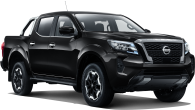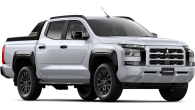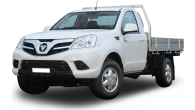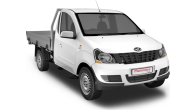Ford has been giving the king of the utes Hilux some stick with its good looking Ranger lineup.
It’s not surprising as Toyota waits patiently for a replacement for the aging Hilux which has been facelifted more times than Liz Taylor. Sorry, she’s dead isn’t she - but you know what we mean?
Value
Priced from $24,390 Ranger comes in a variety of forms, from the barebones cab-chassis that requires a tray to the top of the range 4x4 Wildtrak double cab with its own tub plus all the bells and whistles.

Our test vehicle the XLT Double Cab Pick-Up sits one rung down from the top, with a 6-speed auto as standard and priced from $53,890.
With a total of 26 models from which to choose it is difficult to work out which model comes with what, but the XLT does not miss out on much.
It retains cloth trim but automatic lights and wipers are standard along with Bluetooth, dual-zone climate air, with a chrome sports bar, side steps and tow bar.
Satnav was recently added to the mix, although our test vehicle was the older version without it.
The Wildtrak for $3500 more adds a rear view camera (incorporated into the rear view mirror), 8-way power adjust driver’s seat with lumbar (instead of four), heated front seats, puddle lights, roof rails, and a lockable roller style tub lid.
Design
Those in the know will be aware the Ranger is near-identical to the Mazda BT-50 under the skin.
That is a good thing and few people are likely to disagree when we suggest Ranger is the better looking of the two.
The latest model is a quantum step forward in every department and recognises the fact many people now use these vehicles for work and play, and even in some cases as the family wagon which is reflected in the levels of equipment available. Safety has been beefed up dramatically too.
The dual-cab tub for those interested measures 1549mm long, by 1560mm wide and 511mm deep, with 1139mm between the wheel arches, and it can carry a payload of up to 1041kg.
Engine / Transmissions
Ranger comes with a choice of a four or five cylinder turbodiesels, with manual or automatic transmissions. The 2.5-litre four cylinder petrol engine that used to power the entry model has been dropped.
Our test vehicle the XLT is available only with the 3.2-litre five cylinder turbodiesel, with 147kW of power and 470Nm of torque, the latter from a low 1500 revs.
It’s paired with a 6-speed auto and with an 80-litre tank fuel consumption is rated at 9.2 litres/100km (we were getting 9.0 after 650km).
Safety
Recent changes have seen the entire Ranger lineup earn a maximum five stars for safety. It comes with six airbags, electronic traction and stability control, with ABS anti-lock braking and electronic brakeforce distribution. Rear parking sensors are standard but not a reverse camera.
Driving
Even my wife likes driving this one. The Ranger is remarkably smooth and easy to drive for a big 4x4 ute. The auto takes all of the hard work out of driving the beast and is our first choice, even if you intend to take the ute off road.
Apart from the fact most autos never quite deliver the same low range first gear reduction of a manual, there is no real downside.
It does however get hill descent control which largely makes up for this and the overall off road experience is a lot easier and less nerve-racking in an auto.
The cloth seats are comfortable but the dash layout takes some getting used to, because you need to match what the screen is telling you with the row of four control buttons either side of the main control knob - it’s not as easy as it sounds.
We also note the Bluetooth system seems to accept only one phone connection at a time which is a bugger if there are two of you driving the car on a regular basis.
Ford Ranger 2014: XLT 3.2 Hi-Rider (4x2)
| Engine Type | Diesel Turbo 5, 3.2L |
|---|---|
| Fuel Type | Diesel |
| Fuel Efficiency | 8.9L/100km (combined) |
| Seating | 5 |
| Price From | $14,080 - $18,590 |
| Safety Rating |
|
Verdict
Looks good, goes well and manages to reflect Ford’s tough truck image. Easy to see why it is selling so well - watch out Hilux!
Pricing Guides


































.jpg)

